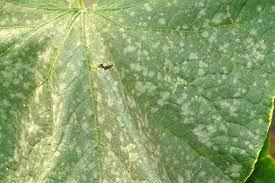Arugula plant
Arugula is an annual, 12-24 inches tall, and frost-tolerant. It prefers well-drained, sandy-loam soil in full sun. Keep the soil moist. Arugula is both edible and has medicinal properties.
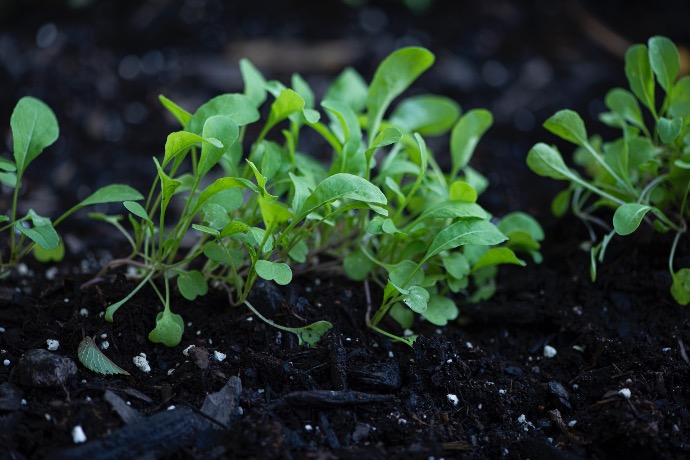
Habit
Annual
Height
0.2-0.6 m
Growth
Fast
Soil
Well-drained fertile soil
Shade
Full Sun
Moisture
Moist
Edible
Yes
Medicinal
Yes
Origin
Mediterranean
Climatic Condition
Temperate
Temperature (°)
10-20°C
Humidity (%)
60-70%
Potting media
Garden soil
Fertilizers
Balanced NPK
Watering
Regular watering; keep soil moist
Plant Weight
200-500 g
Flowering Time
Spring and Fall
Soil Ph level
6.0 - 7.0
Water Ph level
6.0 - 7.0
Soil EC
Medium
Yield Per Plant
1/2 lb to 3 lb per plant
NPK ratio
20:10:10
life Span
Annual
Health Benefits
High in vitamins K and C; supports bone health.
Suggested Grow Media or Potting Mix ?
50% compost, 30% peat moss, 20% perlite
Suggested Fertigation/Fertilizers
Fertilize every 2 weeks with a balanced, water-soluble fertilizer.
Common Diseases and Remedies
Bacterial leaf spot, Downy mildew.
Small water soaked or brown spots on leaves; yellowing leaves., Irregular brown flecks or spots on tops and bottoms of leaves; downy mold on underside.
Remove infected plants and any debris from soil., rotate crops regularly.
HEALTH BENEFITS
· Rich in Nutrients – High in vitamins A, C, and K, as well as folate, calcium, and potassium.
· Supports Bone Health – Vitamin K helps with bone mineralization and reduces the risk of fractures.
· Boosts Immunity – Vitamin C and antioxidants strengthen the immune system.
· Aids Digestion – High fiber content supports gut health and regular digestion.
· Heart Health – Nitrate content may help lower blood pressure and improve circulation.
· Anti-Inflammatory Properties – Contains phytochemicals that reduce inflammation.
What Is An Arugula ?
Arugula, also known as arugula or arugula, is a green leafy vegetable that belongs to the cruciferous family, which includes other cruciferous vegetables such as cauliflower, cabbage, and cabbage. It has a peppery, slightly bitter taste and is often used in salads, sandwiches and as a garnish.
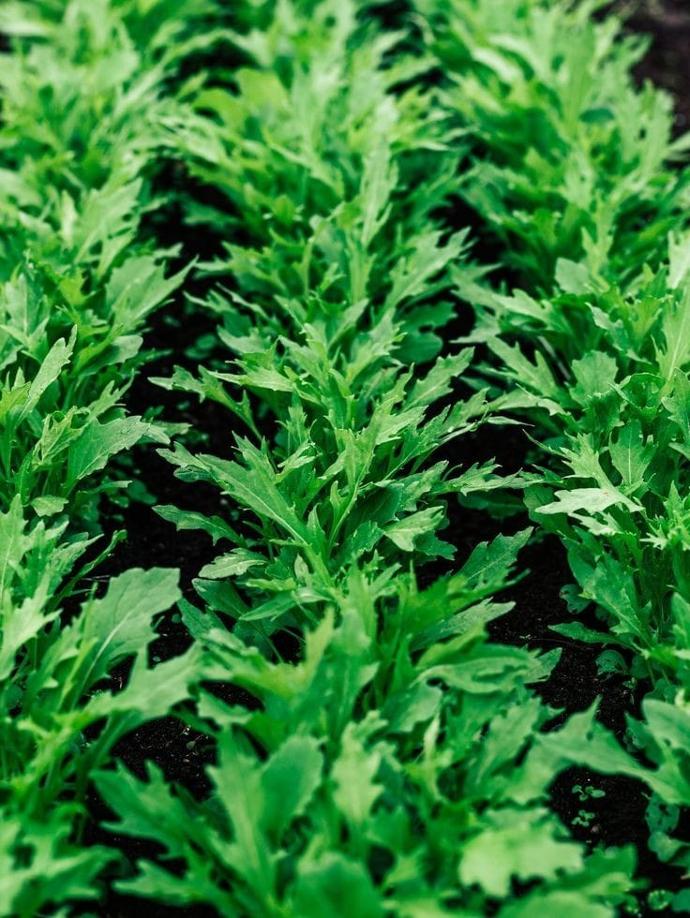
What Are The Different Types Of Arugula Plants?
1. Astro
This variety is known for its rapid growth and resistance to bolting (as well as seeds). It has a slightly nutty flavour and is often used in salads and sandwiches.
2. Sylvetta
Also called wild arugula, this type has a more peppery taste than other types. It is often used as a garnish or pesto.
3. Wild Rocket
This variety has dark green leaves with a strong, peppery flavour. It is frequently used in Mediterranean cuisine and pairs well with tomatoes and cheese.
4. Cultivation Rocket
This variety is smaller than wild rocks, has a delicate scent. It is often used in salads and side dishes.
5. Agaves
The leaves of this variety are purple in colour and have a slight peppery scent. It is often used in salads and side dishes.

How to Care Arugula Plant ?
1. Location
Arugula is a cool-season crop that grows best in temperatures between 10°C and 18°C (50°F and 65°F). It can grow in spring and fall, but likes to bolt (go to seed) quickly when the weather is warm. Therefore, the best place for arugula plant is sunny or partial shade, depending on the climate. In hot climates, arugula can benefit from evening shade to protect from the harsh midday sun.
2. Sunshine
Arugula plants like full sun but can also tolerate partial shade, especially in hot weather. Generally speaking, arugula plants need at least 6 hours of sunlight per day to grow and thrive. If you're growing arugula indoors, place it near a south-facing window that gets plenty of sunlight. If you are growing arugula outdoors, choose a location that will receive full sun. However, in hot weather, arugula can benefit from evening shade to protect itself from the harsh sun during the day. In general, providing good sunlight to arugula plants is important for their growth and development.
3. Soil
Arugula plants prefer well-drained, fertile soil with a pH between 6.0 and 7.0. The soil should be loose, friable and well-drained to prevent waterlogging. If you are growing arugula in your garden, you can improve the soil to increase fertility and improve drainage by adding organic matter such as manure or aged manure. If you are growing arugula in a container, use a good mix designed specifically for vegetables. Do not use heavy clay or compacted soil; these will inhibit root development and water absorption. In general, providing the soil type for your arugula plants is important for their growth and development.
4. Hydration
Arugula plants need the same amount of water to grow and develop, but they do not like water. The soil should be kept evenly moist but not wet. Water your plants regularly, especially during drought, and avoid high-altitude watering to prevent diseases. It's a good idea to water arugula in the morning so the leaves have time to dry before evening, which helps prevent fungal diseases. If you are growing arugula in a container, make sure the pot has drainage holes so excess water can drain away. In general, providing your arugula plants with adequate water is very important for their growth and development.
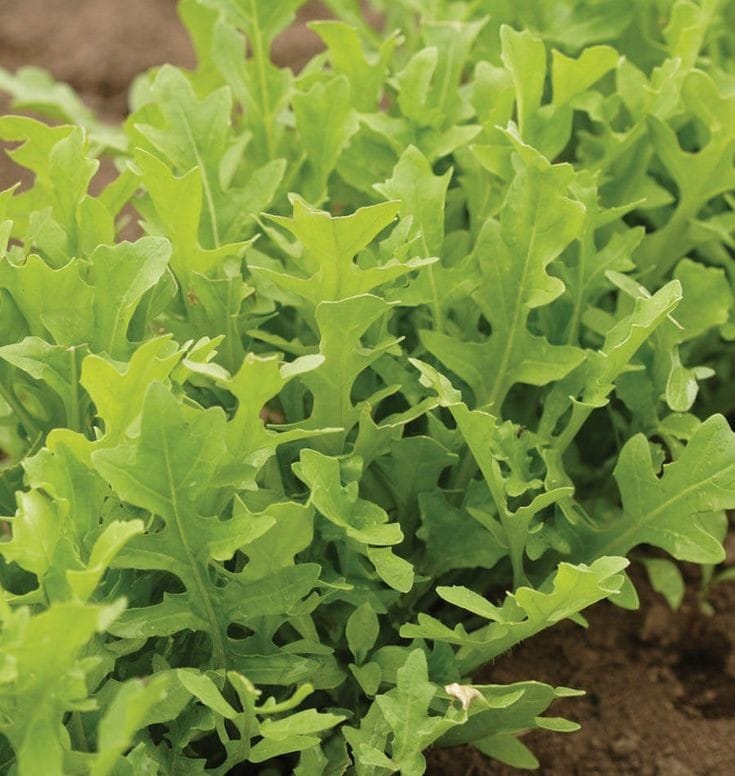
5. Nourishment
Arugula plants need nutritional balance to grow and develop. Although they don't need a lot of fertilizer, you can apply a balanced, water-soluble fertilizer every 4 to 6 weeks to encourage good growth. Find a specific fertilizer for vegetables and follow the manufacturer's instructions. Arugula plants also benefit from adding organic matter, such as compost or aged manure, to the soil. This helps increase the fertility of the soil and provides plants with a stable source of nutrients. In general, providing your arugula plants with the right nutrients is important for their growth and development.
6. Issues
Arugula is a cool seasoner and tends to go to seed quickly in warm weather. To prevent bolting, plant arugula in spring or fall when temperatures are cooler and provide afternoon shade during hot weather. Without a balanced nutrient source, arugula plants may develop nutrient deficiencies. Apply water-soluble fertilizer and add organic matter to the soil every 4 to 6 weeks to prevent nutrient deficiencies. Arugula plants need constant moisture, but they do not like to be watered. Ensure good drainage and avoid overwatering to prevent water stagnation.
What are the Benefits of Arugula Plant ?
Arugula is a green leafy vegetable that belongs to the cruciferous family, which includes other cruciferous vegetables such as cauliflower, cabbage, and cabbage. This is not a tree; Instead, it is a fast-growing annual plant grown mostly for its edible leaves. The leaves have a peppery, slightly bitter taste and are often used in salads, sandwiches and as a garnish. Arugula is a cool-season vegetable that grows best in temperatures between 10°C and 18°C (50°F and 65°F), and can be grown in spring and autumn. It is an easy plant to grow and can be planted directly into the ground or started indoor cultivation. The leaves can be picked when they are young, usually about 4 to 6 inches long. Arugula is a good source of vitamins A, C and K, as well as folate, calcium and potassium. It is also low in calories and high in fiber.
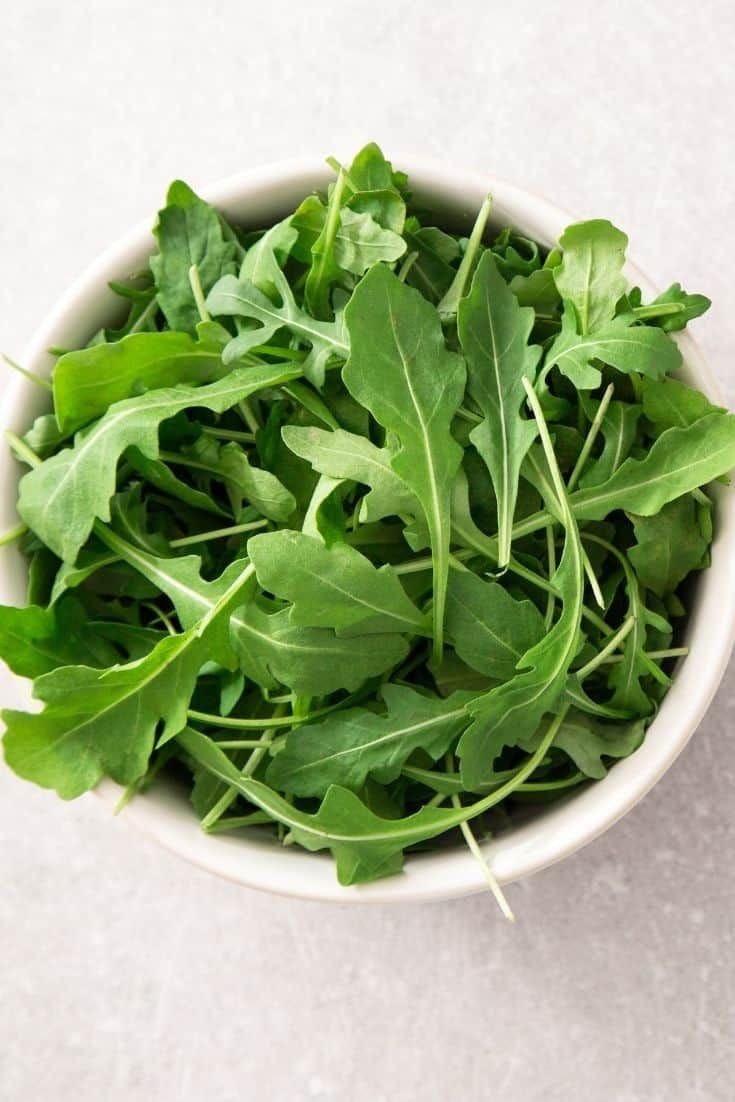
FAQs About Growing Arugula
1. How to maintain arugula plants ?
Arugula is relatively pest and disease resistant, but it can be susceptible to flea beetles, aphids, and downy mildew. Crop rotation and good garden hygiene can help prevent these issues. Arugula is best eaten fresh, but it can be stored in the refrigerator for up to a week. To prolong its freshness, store it in a plastic bag with a paper towel to absorb excess
2. What are the uses of arugula plants ?
Arugula, also known as rocket or roquette, is a leafy green vegetable that is commonly used in a variety of culinary applications. Some of the most common uses of arugula include: Arugula is often used as a salad green, either on its own or mixed with other salad greens. Its peppery, slightly bitter flavour adds a unique twist to salads. Arugula is a popular sandwich ingredient, especially in sandwiches with grilled or roasted meats. Its peppery flavour pairs well with savoury ingredients. Arugula is often used as a pizza topping, either fresh or wilted. Its peppery flavour adds a nice contrast to the richness of the cheese and other toppings. Arugula leaves can be used as a garnish for a variety of dishes, including soups, stews, and pasta dishes. Its bright green colour and peppery flavour can add a pop of freshness to the dish.
3. Can I grow arugula plants indoor ?
Yes, you can grow arugula plants indoors. Arugula is a cool-season crop that grows best in temperatures between 50°F and 65°F (10°C to 18°C), so it is well-suited to indoor growing.
4. Which pot is best for growing arugula plants ?
When growing arugula plants in containers, it's important to choose the right pot to ensure the plants have enough space to grow and thrive. Here are some factors to consider when selecting a pot for growing arugula: Arugula plants have shallow root systems, so they don't need a lot of space to grow. A pot that is at least 6 inches deep and has a diameter of 12 inches or more should provide enough space for the plants to grow. Arugula plants don't like to be waterlogged, so it's important to choose a pot with drainage holes in the bottom. This will allow excess water to escape and prevent the soil from becoming waterlogged. Dark-coloured pots can absorb more heat, which can be beneficial for arugula plants in cooler climates. However, in hot climates, dark-coloured pots can become too hot and may cause the soil to dry out more quickly. Light-coloured pots can help reflect heat and keep the soil cooler.
5. From where can I shop arugula plats ?
You can shop for arugula plants at a variety of places, including: Many local nurseries and garden centers carry arugula plants, especially during the spring and fall planting seasons. These stores often have a wide selection of plants and can provide advice on how to care for them. There are many online retailers that sell arugula plants, including Amazon, Burpee, and Johnny's Selected Seeds. These retailers often have a wide selection of plants and can ship them directly to your door. Some farmers' markets sell arugula plants, especially in the spring and fall. These plants are often grown by local farmers and may be more acclimated to your climate. Overall, there are many places where you can shop for arugula plants, both online and in person. By shopping around and comparing prices and selection, you can find the best plants for your garden.

